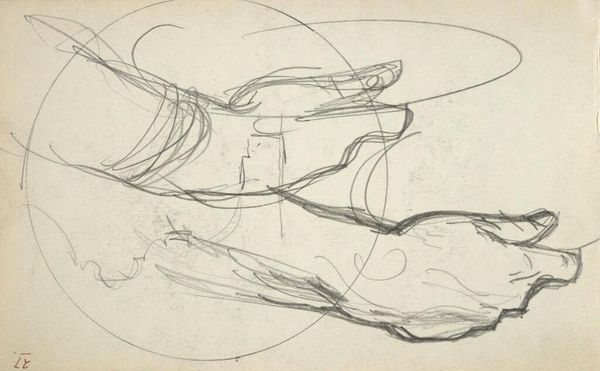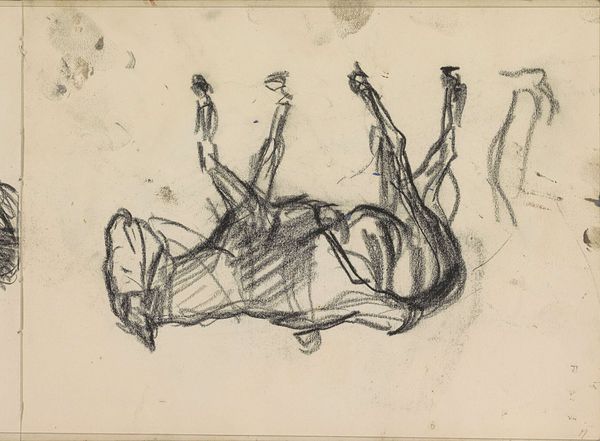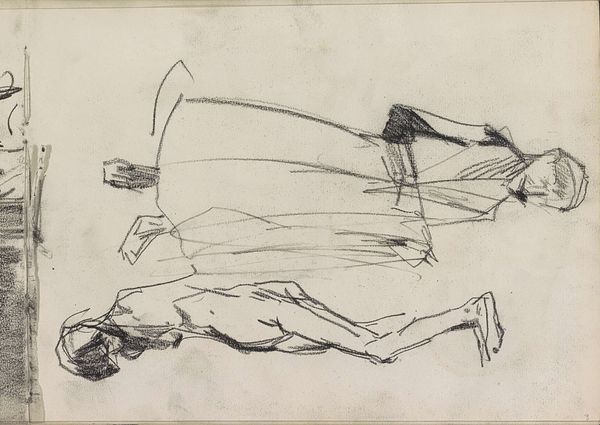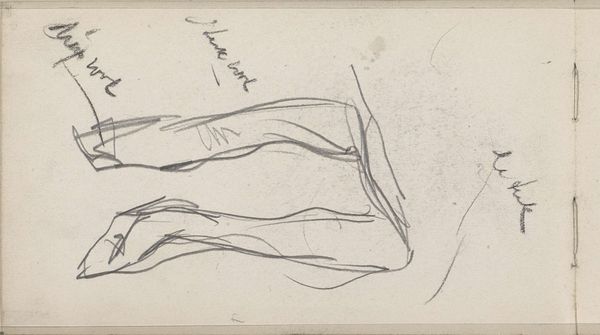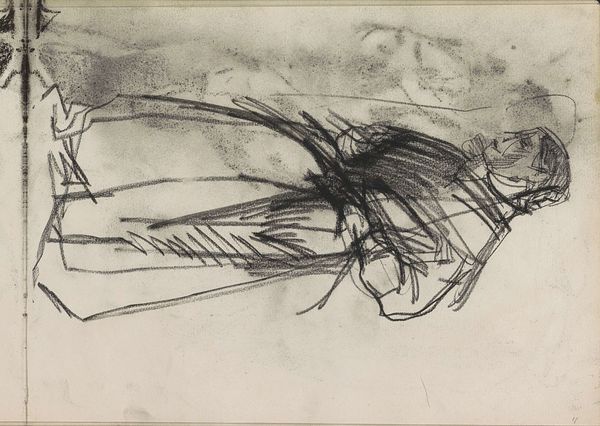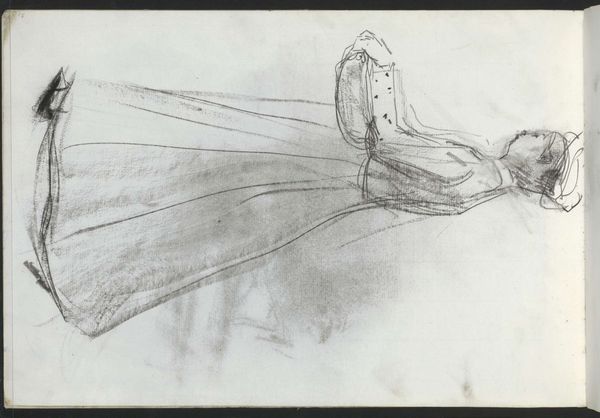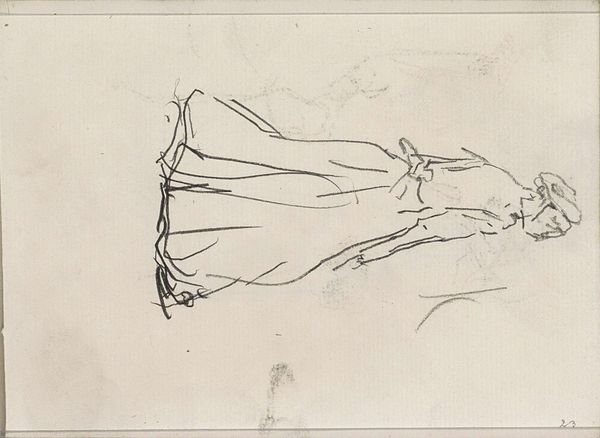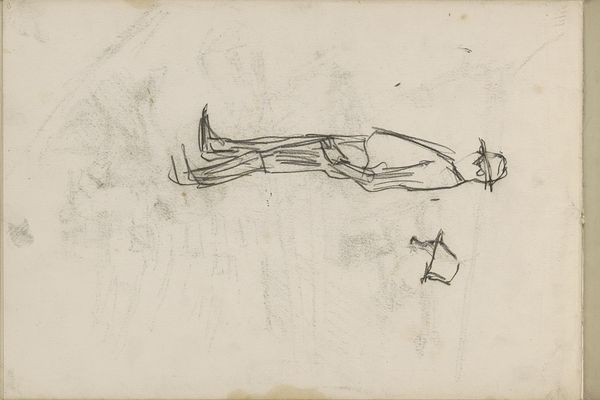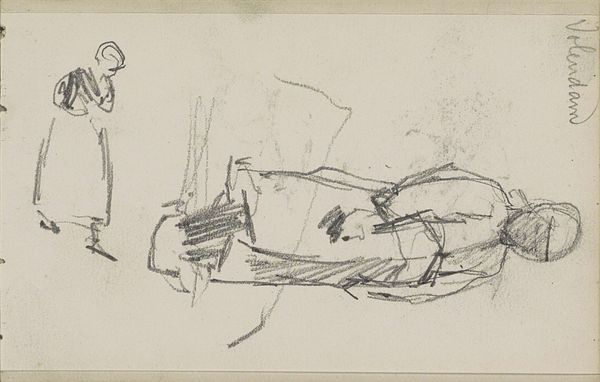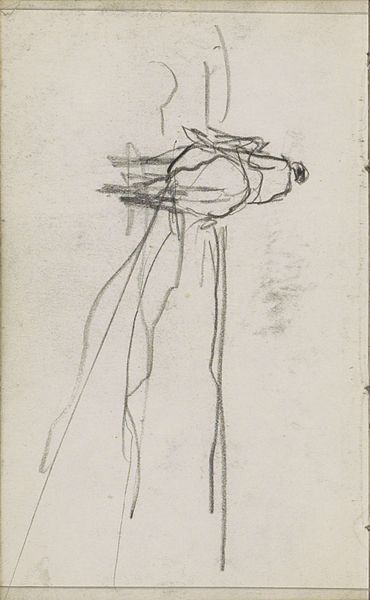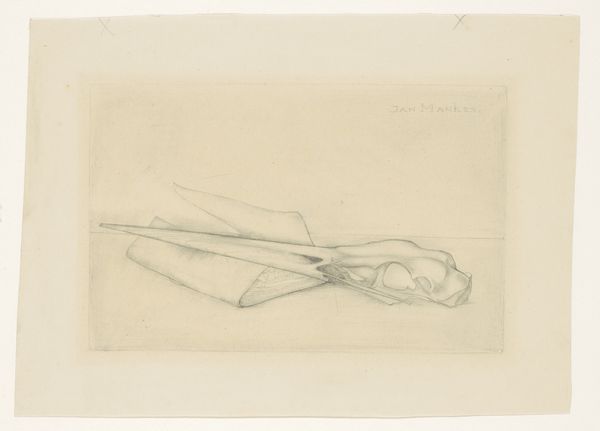
Copyright: Rijks Museum: Open Domain
Editor: This is "Standing Woman, in Profile," a graphite drawing on paper made circa 1892-1900 by Isaac Israels, currently held in the Rijksmuseum. It's interesting how the sketchiness almost gives a sense of movement, like she’s about to walk off the page. How do you interpret this work, looking at its form? Curator: The strength of this piece lies in its dynamism. Notice how Israels uses a confident, almost hasty line to delineate the figure. There's a clear emphasis on capturing the essence of the form rather than meticulous detail. The weight and fall of the garment are expertly suggested through the variation in line weight. The hatching technique and the strategic blurring certainly play a significant role in the composition. What does this focused lack of detail mean to you? Editor: I guess the loose strokes give it a spontaneous feeling, almost unfinished. It highlights certain angles and curves of her figure rather than offering a complete picture, if you will. Curator: Precisely. It compels the viewer to engage actively, to complete the image mentally. The restriction to only graphite, the profile viewpoint—they create a composition which captures immediacy of perception. There's a calculated tension between representation and abstraction which defines the piece. This interplay enhances the visual intrigue. Editor: That’s a different way to think about it, like he’s intentionally withholding information to make the drawing more engaging. I was just focused on it as a sketch, not something deliberately designed to be open-ended. Curator: In this case, it's productive to consider how technique, form and content combine and reinforce the immediacy we talked about, as well as generate dynamism. Editor: Thanks for showing me that. It is interesting how that bareness gives it energy instead of feeling incomplete.
Comments
No comments
Be the first to comment and join the conversation on the ultimate creative platform.
